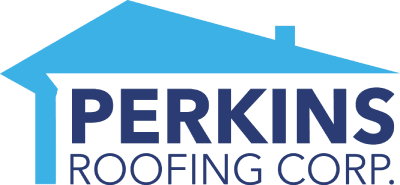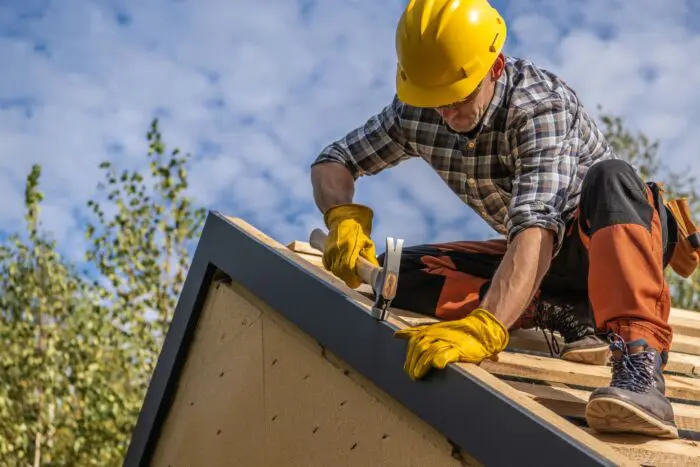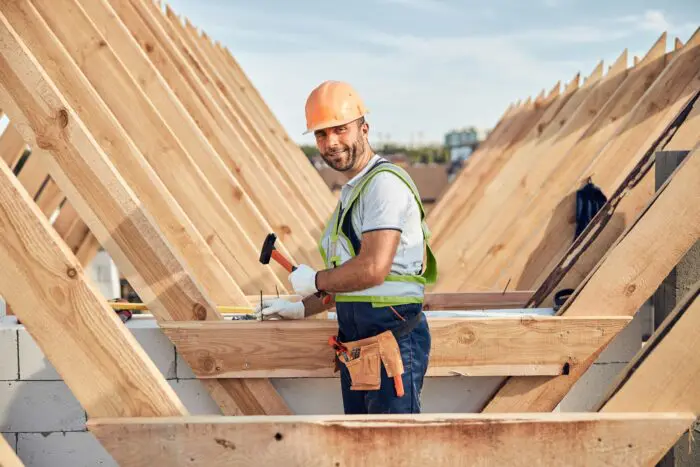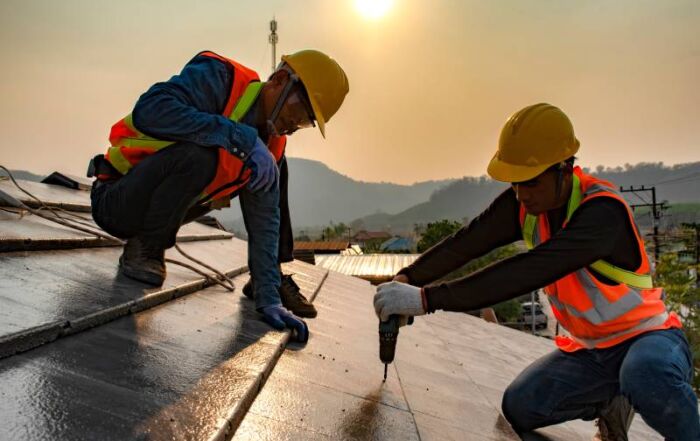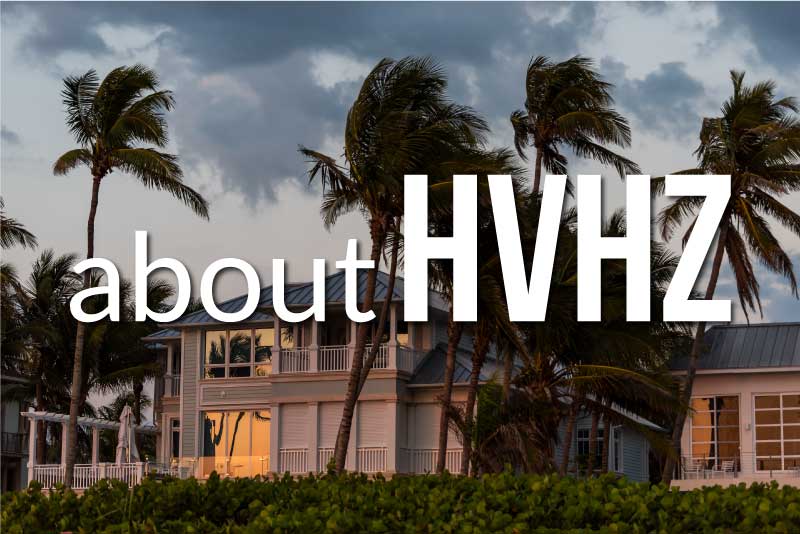
Date Posted:
July 30, 2022
Post Author:
Tim Kanak
Categories:
What is a High-Velocity Hurricane Zone (HVHZ)?
South Florida typically experiences severe tropical storms also known as Hurricanes. However, some areas feel the impact more. These areas are designated HVHZ (High-Velocity Hurricane Zone.) The HVHZ designation aims to ensure the safety and resilience of buildings in South Florida’s most hurricane-prone areas. It helps protect homes and businesses from the damaging effects of severe tropical storms, safeguarding lives and reducing property damage during these powerful weather events.
What is HVHZ?
The High-Velocity Hurricane Zone is an area in South Florida marked for its severe weather. This area experiences more hurricanes compared to others. This designation mandates strict building standards to enhance structural resilience and protect lives.
Hurricanes are severe tropical storms with winds of at least 74 miles per hour. This weather condition forms over warm ocean waters to produce a large swirl of storms and pushes a wall of water on dry land causing a flood.
At 38 mph, it is called a tropical depression. As the winds grow higher to exceed 39mph, it becomes a tropical storm and eventually reaches a hurricane at 74 miles per hour..
Although the cause of a hurricane is uncertain– other than the warm ocean waters that are believed to supply it energy and affecting factors such as dust from Africa and pressure from the Caribbean or Atlantic– the National Weather Service or local Hurricane Center broadcast a looming hurricane.
This broadcast helps locals prepare for the challenging days ahead. Depending on the predicted damage, some locals may be advised to evacuate their homes.
Areas Mostly Affected in South Florida
This severe tropical storm affects Broward, Coastal Palm Beach, and Miami-Dade from the 1st of June to the 30th of November. If you live in this area, you are in the HVHZ. Living in the HVHZ means that residents need to be particularly prepared and aware during this period as they are more likely to be impacted by severe weather events.
Recent Hurricanes in Florida
Hurricane Andrew and Hurricane Irma are the recent hurricanes in Florida with winds of about 165 mph and 130 mph respectively.
Andrew, a category 5 hurricane, had landfall on August 24, 1992, while Irma, a category 4 and later a 3, was on September 10, 2017. The former destroyed more than 25,000 homes while the latter destroyed almost the whole of Florida.
On June 4, 2022, South Florida experienced heavy rainfall and gusty wind. The National Hurricane Center has therefore warned of continued flooding, calling the storm Potential Tropical Cyclone One which would be named Alex if it graduates to a tropical storm.
How Does HVHZ Affect You?
Living in the HVHZ means that your living conditions must adhere to HVHZ ratings. This rating starts with your building materials.
Many homes are submerged in flood alongside animals and other valuables when hurricanes hit a community. Some lives are lost while others are left homeless. For this reason, the state has enforced a stricter building code with HVHZ ratings to help reduce the damage caused by hurricanes in these areas.
Building materials are therefore tested and certified to withstand severe weather conditions.
How to Prepare Your Home for Hurricane
Knowing your risk zone outside and within your home helps you prepare for hurricanes. Your building exposure determines the impact rating of the products you are allowed to use and these materials must come with the approved rating markings.
The following are some tips to help prepare your home for hurricanes in Florida
1. Protect your Roof
Inspect your roof for leaks, gaps, and missing shingles and repair or replace them. For an extra layer of protection, consider roofing straps. These straps are designed to provide an additional layer of security during extreme weather conditions, such as strong winds. By securely holding your roof in place, they can help prevent shingles from being lifted or torn off, reducing the risk of costly repairs and ensuring the long-term stability of your home.
You can also check with your contractor to know what roofing materials are HVHZ impact-rated.
2. Secure Windows
Storm shutters will come in handy, providing a sturdy barrier against the battering winds and debris that can accompany a powerful storm. They not only shield your windows from potential damage but also help maintain the integrity of your home’s interior by preventing dust and dirt from being swept in by the gusts. For added protection, considering the installation of impact-resistant glass is a wise choice. This specially designed glass can withstand the force of flying objects during a storm, reducing the risk of shattered windows and maintaining a secure environment for your family and belongings.
3. Trim Trees
This is perhaps the best time to go around your yard and inspect your trees. Look out for weak and hanging limbs and prune them. Collect fruits and trim shoots.
If you find a weak tree that may be uprooted when the hurricane starts, it’s better to have it removed than leave it to destroy your home or your neighbor’s.
Remove abnormally leaning trees and trees with decaying roots. Tree experts have the best tips when it comes to preparing your yard for hurricanes.
4. Repair Garage Door
Get rid of a faulty garage door or repair it as necessary. Ensure the security of your possessions in your garage until the hurricane has passed. Avoid exposing your vehicle, furnishings, and other portable items to the elements. It is crucial to eliminate any objects that could potentially become projectiles during the hurricane.
5. Backup Generator
The chances of power disruption during the hurricane season are high. If you can afford one, consider a generator that can power up the basic home equipment. However, you must also put measures in place to keep your family safe from any potential generator risks. This includes ensuring proper ventilation to prevent carbon monoxide buildup, keeping the generator away from flammable materials, and regularly inspecting the equipment for any signs of wear or damage.
Takeaway
Residing in a High-Velocity Hurricane Zone is not a pleasant experience, especially during the exposure period. However, if you have no plans of relocating outside South Florida, your best bet is to prepare for the bad days, by protecting your home and reducing impacts.
In the heart of the High-Velocity Hurricane Zone, Perkins Roofing Corp stands as your reliable partner for roofing services. Contact us today for expert roof contractors you can trust.
